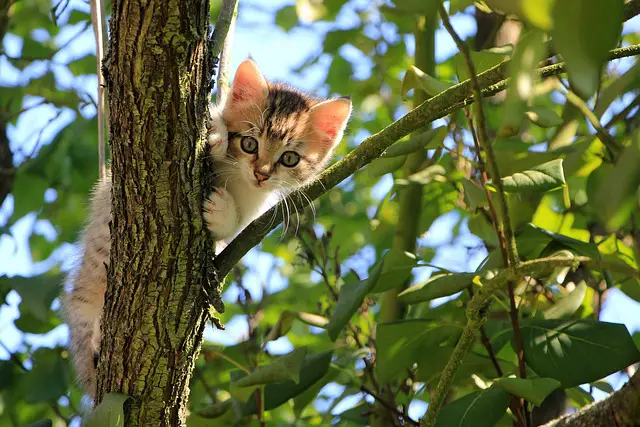When introducing cats, hissing is a common behavior that owners may witness. While hissing may seem alarming, it is a normal part of the feline introduction process. Hissing is a way for cats to communicate their discomfort or fear to the other cat, and it can also serve as a warning to back off.
It is important to remember that every cat is different, and some may hiss more than others during the introduction process. However, excessive hissing may indicate that the cats are not ready to be introduced yet and may need more time to adjust.
Owners should also be aware of other signs of aggression, such as growling, swatting, or pouncing, which may require intervention from the owner or a professional behaviorist.
Understanding Hissing in Cats
What is Hissing in Cats?
Hissing is a common vocalization in cats, often associated with aggression or fear. It is a sound produced when a cat forcefully exhales air through its mouth while keeping its lips tightly closed. The resulting sound is a hissing noise that can be pretty loud and intimidating.
Why Do Cats Hiss?
Cats hiss for a variety of reasons. One of the most common reasons is as a warning signal. When a cat feels threatened or scared, it may hiss to communicate to others to stay away. Hissing can also signify aggression, especially when a cat feels territorial or is confrontational.
Is Hissing Normal When Introducing Cats?
Yes, hissing is a normal behavior when introducing cats to each other. Cats are territorial animals that may hiss to establish their dominance or defend their territory. Hissing can also signify fear or anxiety, especially if the cats meet for the first time.
When introducing cats to each other, allowing them to approach each other slowly and on their terms is essential. This can help to reduce the likelihood of aggressive behavior and excessive hissing.
It is also essential to provide each cat with space and resources, such as food, water, and litter boxes, to help reduce competition and conflict.
In conclusion, hissing is a common behavior in cats associated with various emotions, including fear, anxiety, and aggression.
When introducing cats to each other, it is essential to be patient and allow them to approach each other slowly and on their
terms to help reduce the likelihood of aggressive behavior and excessive hissing.
Introducing Cats: How Much Hissing is Normal?
Introducing cats to each other can be tricky, and it’s not uncommon for some hissing to occur during the initial meetings. But how much hissing is usual? In this section, we’ll explore some factors that affect hissing, signs of aggression to watch out for, and tips for introducing cats with minimal hissing.
Factors That Affect Hissing
Several factors can influence the amount of hissing that occurs during cat introductions. These include:
- Age: Older cats may be less tolerant of new cats and may hiss more frequently.
- Sex: Introducing cats of the opposite sex can sometimes result in more hissing due to mating instincts.
- Territory: Cats are territorial animals and may hiss when they feel their space is invaded.
- Personality: Some cats are more social than others and may be more accepting of new cats.
Signs of Aggression to Watch Out For
While some hissing is usual during cat introductions, watching for signs of aggression is necessary. These can include:
- Growling
- Swatting
- Puffing up of fur
- Lunging
- Biting
If you notice any of these behaviors, it may be best to separate the cats and try again later.
Tips for Introducing Cats with Minimal Hissing
To minimize hissing during cat introductions, try the following tips:
- A gradual introduction process allows the cats to get used to each other’s scents before meeting face-to-face.
- Provide each cat with its own space, such as a separate room or area of the house, to retreat to if they feel uncomfortable.
- Use positive reinforcement, such as treats or toys, to encourage good behavior during interactions.
- Consider using pheromone sprays or diffusers to help calm the cats.
Remember, introducing cats can take time and patience. So don’t rush the process, and always prioritize the safety and well-being of your furry friends.
Conclusion
In conclusion, introducing cats can be a delicate process that requires patience and careful observation. Hissing is common during this process and is usually not a cause for concern. However, monitoring the cats’ body language and behavior is vital to ensure they are not becoming overly aggressive or stressed.
Here are some key takeaways to keep in mind when introducing cats:
- First, hissing is a normal behavior during cat introductions, but it should not be the only behavior exhibited.
- Cats may hiss to communicate their discomfort or establish boundaries, but ensuring they are not becoming aggressive toward each other is essential.
- If the cats are hissing excessively or showing signs of stress, it may be necessary to separate them and try again later.
- Gradual introductions, scent swapping, and supervised interactions can help cats adjust to each other more easily.
Remember, every cat is unique, and there is no one-size-fits-all approach to introducing cats. However, being patient and observant can help ensure a successful introduction and a harmonious household.
[su_box title=”Affiliate Disclosure”]This website is supported by its readers. Please assume that all links are affiliate links. If you make a purchase from one of the links we will make a commission from Amazon. Thank you.[/su_box]




